AUSTRALIA
Short on time? Here are our Australia top recommendations:
Places: Sydney or Melbourne for a city escape, Whitsundays, Bay of Fires, Jervis Bay for stunning beaches or Uluru for stunning landscapes.
Activities: book your Australia Tours with Get Your Guide.
Accommodation: we use Booking.com to find the best hotels.
Transport: Greyhound for intercity buses.
Car Hire: for great value car rental in Australia we recommend GoGet
Flights: find cheapest flights with cashback on WayAway.
Airport Lounge Access: start your holiday the right way with Priority Pass.
Travel Medical Insurance: SafetyWing Nomad Insurance is the ideal choice for long-term travellers and digital nomads.
Travel Banking: Wise makes global travel banking seamless and affordable.
Why you should go to Australia
Australia is one of the most exciting and diverse travel destinations in the world. We might be a bit biased, as this is our home country, but we highly recommend adding Australia to your travel bucket list! Australia isn’t the cheapest country to travel to, but it is well worth the cost due to its iconic landmarks, stunning natural landscapes, cute animals, world-class food scene, vibrant multicultural communities and friendly locals. From pristine beaches to cosmopolitan cities and charming towns, there’s something for every kind of traveller. In this Australia travel guide, we share everything you need to know to plan your next Aussie adventure.
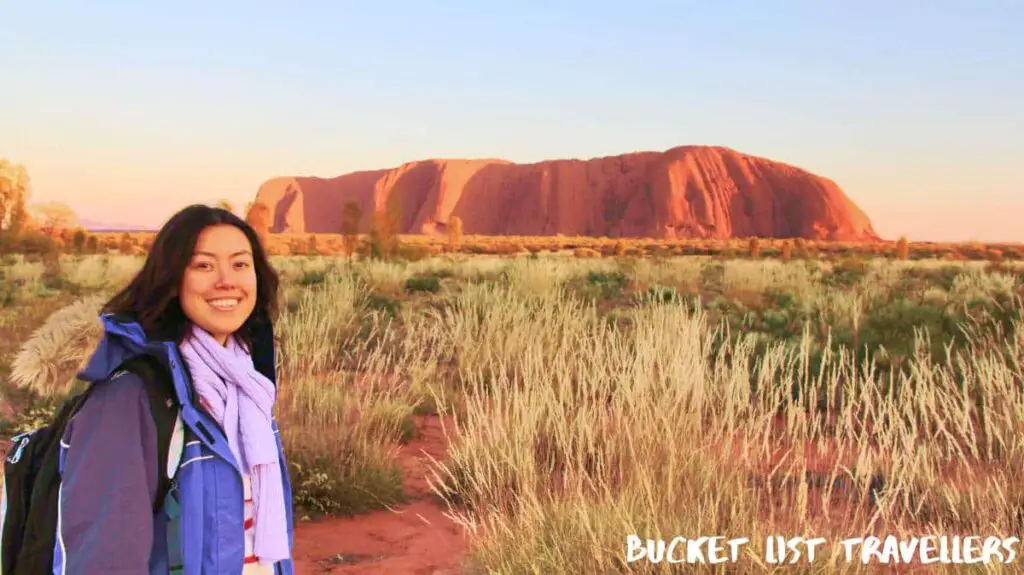
Australia travel guide: Know before you go
Australia travel guide: Basic info about Australia
- Language – English is the de facto national language and is spoken by the majority of the population. Australia is a multicultural nation with over 300 languages spoken, including around 120 Indigenous languages. Other common languages include Mandarin, Arabic, Cantonese, Vietnamese, and Italian.
- Currency – Australian dollar (AUD). The official currency since 1966. Currency exchanges can be found in most cities and ATMs are also available widely throughout the country. Credit cards are widely accepted, however the use of cards may incur an additional fee.
- Population – 25.7 million (2021)
- Area – 7.688 million km2 (2.968 million sq mi)
- Capital – Canberra
- Emergency number – 000 (police, fire, ambulance)
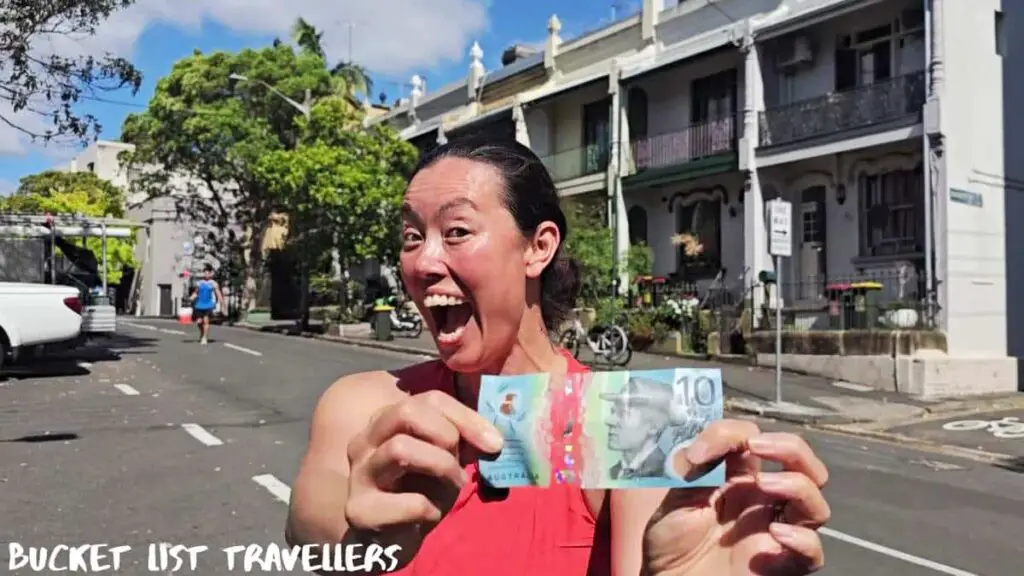
Utilities in Australia
- Electricity – Australia uses Type I power plugs. The country operates on a 230v supply voltage at 50Hz. Blackouts are rare but may occur during extreme weather, especially in rural or storm-prone areas. In cities like our hometown of Sydney, outages are usually brief and infrequent.
- Water – the tap water in Australia is safe to drink and closely monitored to ensure safety and quality. In remote areas or during emergencies, bottled or boiled water may be advised—but this is rare and usually well communicated.
- Toilets – Western-style sit-down toilets with dual flush systems are standard. Public toilets are widespread and usually free to use. Toilet paper is also usually provided. Accessible and gender-neutral options are increasingly available. Some areas are starting to also provide Asian style squat toilets.
- Public telephones are generally free to use for calls within Australia. Additionally some public telephone booths are equipped with include free wifi.
- Telephone country code: +61
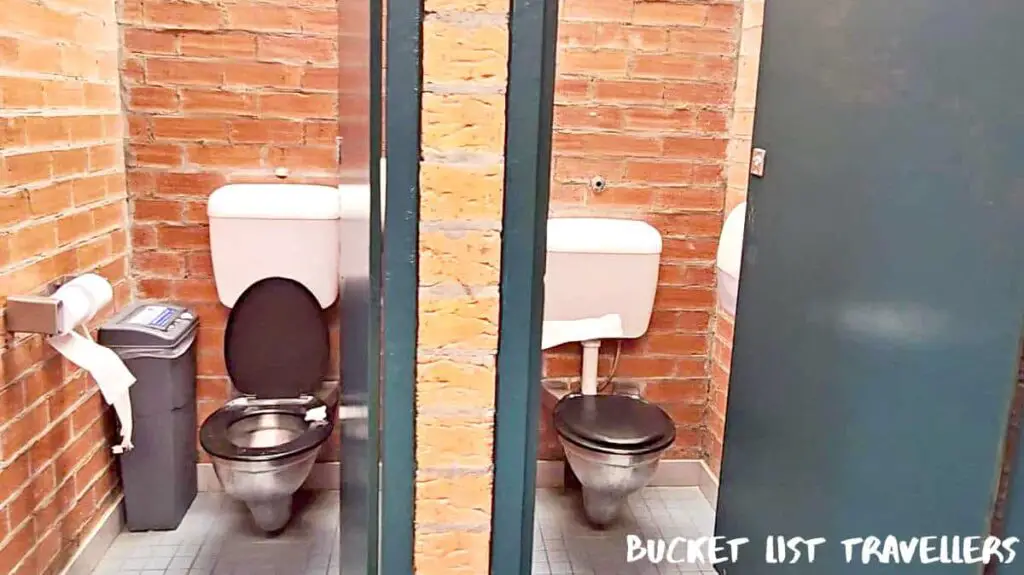
Where is Australia?
Australia is a large island continent located in the Southern Hemisphere between the Indian and Pacific Oceans. Its closest neighbours include Indonesia, Papua New Guinea, East Timor, New Zealand, and several Pacific island nations.
Entry Requirements for Australia
These are the general entry requirements for entry to Australia:
- You need a valid visa or approved Electronic Travel Authority (ETA). Most travellers require a visa or an ETA to enter Australia. ETAs are electronic visas for tourism or business visits of up to 90 days.
- You need to complete and sign an Incoming Passenger Card (IPC): Everyone entering Australia must complete and sign an IPC. This card includes health and character declarations.
- Your passport must be valid for the duration of your stay in Australia. Additionally some airlines may have their own passport validity requirements and if you are transiting through other countries you should check their passport validity requirements as well.
- Travellers aged one year or older must present an international vaccination certificate if they have spent one night or more in a yellow fever risk country within six days prior to arriving in Australia. However those who do not have a certificate will still be permitted entry into Australia.

How to get to Australia
Australia travel guide: arriving overland
There is no land border crossing into Australia, as it is an island continent.
Australia travel guide: arriving by air
Australia has several international airports. Major gateways include:
- Sydney Kingsford Smith International Airport (Airport code SYD). Sydney Airport is the busiest airport in Australia as well as the busiest airport in Oceania.
- Brisbane International Airport (Airport code BNE). Brisbane Airport is Queensland’s main airport and is a key gateway to the Great Barrier Reef.
- Melbourne International Airport (MEL). Commonly known as as Tullamarine Airport. It is the second busiest airport in Australia, serving the city of Melbourne.
- Perth International Airport (PER). Perth Airport is the primary airport for Western Australia, providing vital links to Asia, the Middle East, and regional WA.
- Adelaide International Airport (ADL). Adelaide Airport is South Australia’s largest airport.
- Canberra International Airport (CBR). Canberra Airport services Australia’s capital city, offering domestic flights and limited international routes, and is an important gateway for government and diplomatic travel.
- Cairns International Airport (CNS). Cairns Airport is a key airport for far north Queensland, serving as a major access point for the Great Barrier Reef and tropical North Queensland, with direct flights to Asia and Oceania.
- Darwin International Airport (DRW). Darwin Airport is the busiest airport in the Northern Territory, connecting northern Australia with domestic cities and international destinations, especially in Southeast Asia.
- Gold Coast Airport (OOL). Also known as Coolangatta Airport. It services the Gold Coast and Northern Rivers regions.
- Hobart International Airport (HBA). Hobart Airport is the main gateway to Tasmania, offering domestic flights and occasional international services, and is the busiest airport in Tasmania.
- Townsville Airport (TSV). This airport serves North Queensland with domestic flights and limited international services, acting as a regional hub for travel to the Great Barrier Reef and remote northern communities.
The national airline of Australia is Qantas. Additionally, several other international and budget airlines also operate within Australia.
Australia travel guide: arriving by sea
Australia can also be reached by cruise ships or private vessels via major passenger ports in:
- Sydney
- Melbourne
- Brisbane
- Fremantle (Perth)
- Hobart
- Darwin
- Cairns
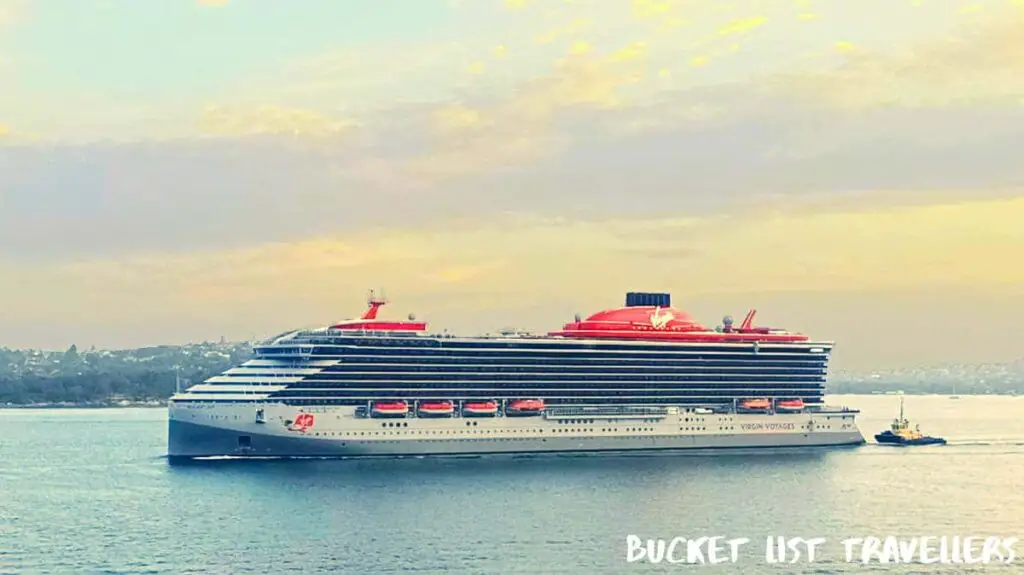
Our experience of entry to Australia
As Bucket List Travellers, we’ve entered Australia many times over the years—most often flying into Sydney Airport, but we’ve also arrived through Melbourne Airport and even by cruise ship into Sydney Harbour. The arrival process is fairly straightforward, although it can take some time depending on how busy it is.
When you arrive, you’ll go through either electronic or manual passport control, depending on your nationality and eligibility. After clearing immigration, you’ll collect your baggage and proceed to customs. Travellers are then directed into two lines—one for those with something to declare and one for those with nothing to declare.
Keep in mind that Australia has some of the strictest quarantine and biosecurity regulations in the world. If you’re ever in doubt about what you’re bringing in, it’s safest to declare it and have a quick chat with a customs officer. They’re used to questions and it’s better to be safe than sorry.
Once you’re through, congratulations—you’ve officially made it into Australia and your adventure begins!
Australia travel guide: How to get around Australia
Local buses in Australia
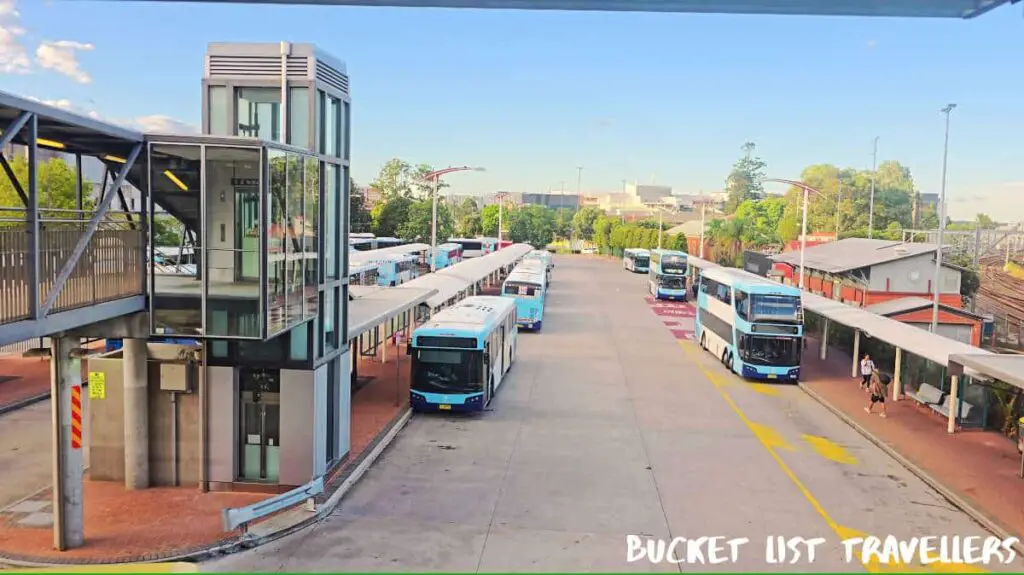
Most cities and towns in Australia have a local bus service. The buses in Australia are a quick and cheap way to get around town.
Trams in Australia
Trams are found in cities like Melbourne (the largest tram network in the world), Adelaide, and parts of Sydney and Newcastle.
Metro and Trains in Australia
Sydney and Melbourne have suburban train systems. Sydney also has a standalone Metro. Brisbane, Perth, and Adelaide have commuter rail systems.
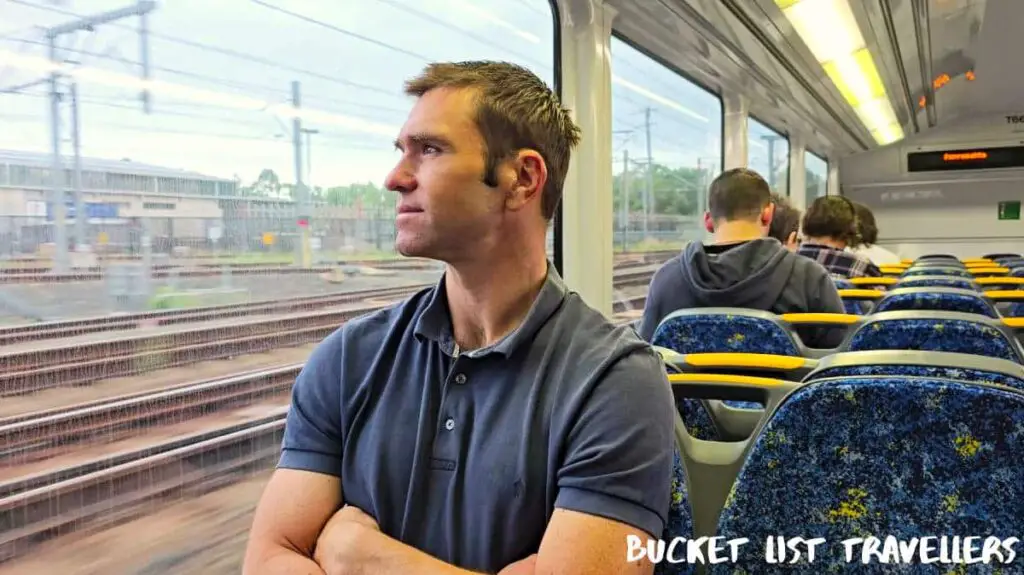
Mass Rapid Transit in Australia
Light rail and bus rapid transit systems are expanding in Australia, especially in major cities.
Ferries in Australia
Ferries are a scenic mode of transport in Australia, especially in coastal cities and island destinations. In Sydney, ferries are an iconic part of the public transport network, offering stunning views of landmarks like the Sydney Opera House and Harbour Bridge as they travel across Sydney Harbour. Other cities such as Brisbane and Perth also operate river ferries that provide a relaxed way to explore the city. In regional areas, ferries connect the mainland to popular holiday destinations like Kangaroo Island in South Australia, Magnetic Island in Queensland, and Bruny Island in Tasmania. Whether for commuting or leisure, taking a ferry in Australia often doubles as a memorable sightseeing experience.
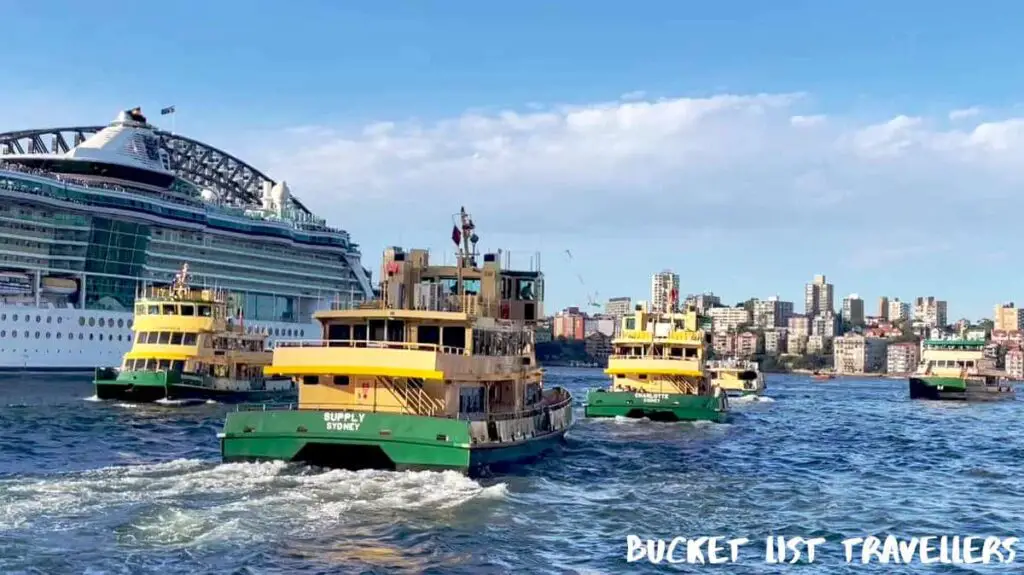
Intercity Trains in Australia
Australia has scenic long-distance trains such as:
- The Ghan (Adelaide to Darwin)
- Indian Pacific (Sydney to Perth)
- Overland (Melbourne to Adelaide)
Additionally, intercity trains along the east coast connect major cities like Sydney, Melbourne, and Brisbane with regional centres, but services are relatively infrequent, and travel times can be long.
While Australia’s interstate rail services can be a memorable travel experience, they are generally slower and more expensive than flying or taking long-distance buses.
Australia’s rail system is not as extensive or affordable as its bus network, but for those who value the journey as much as the destination, it’s a scenic and comfortable option for seeing the country.
The long-distance trains are operated by Journey Beyond Rail Expeditions, while NSW TrainLink, V/Line, and Queensland Rail provide regional and intercity train services in their respective states.
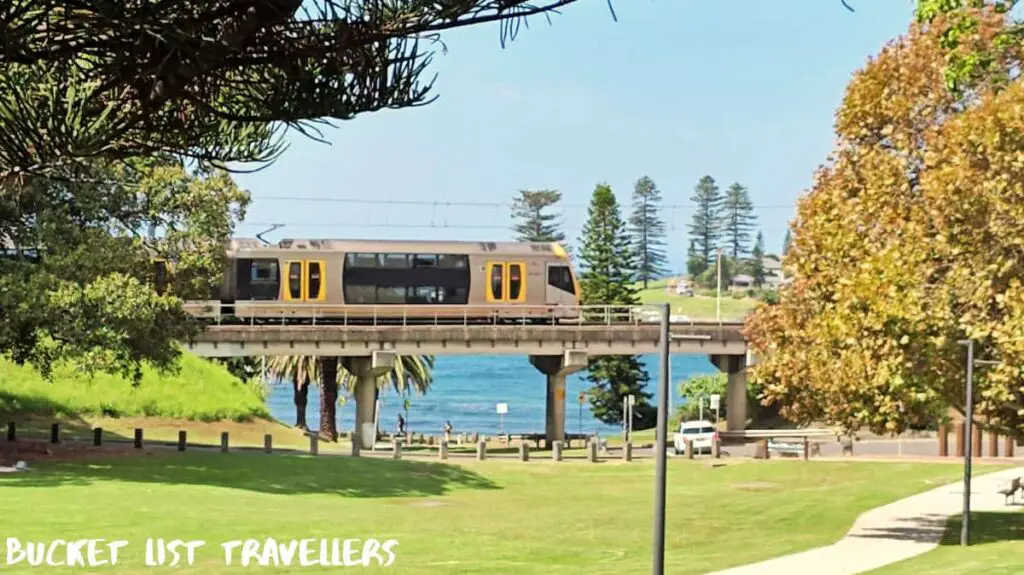
High speed trains in Australia
Australia does not currently have any high-speed trains, despite ongoing discussions and proposals over the years. While countries like Japan, France, and China have developed extensive high-speed rail networks, Australia’s rail infrastructure has remained relatively slow and limited in scope. The most prominent proposal is the long-debated high-speed rail line connecting Sydney, Canberra, and Melbourne, which could significantly cut travel times and provide a more sustainable alternative to flying. However, as of now, the project remains in the planning and feasibility stage, with no construction started. For now, Australians rely on conventional rail, long-distance buses, and domestic flights for intercity travel.
Intercity buses in Australia
Greyhound Australia and Firefly Express offer coach services between major cities. Additionally, Premier Motor Service operates coach routes along the East Coast of Australia, connecting travellers with scenic towns, charming villages, and major cities from Cairns in Queensland to Eden in southern New South Wales.
Vehicle hire in Australia
A wide variety of vehicles can be rented in Australia. This includes:
- Bicycles
- Electric scooters
- Motorcycles
- Cars
- SUVs
- Campervans
- Boats
In Australia we drive on the left side of the road. Roads are generally well maintained, but distances can be vast. A valid licence (and sometimes an international driving permit) is required to drive in Australia.
Shuttles in Australia
Airport-city transfers are common and can be booked online or through your hotel.
Taxis in Australia
Taxis are common in Australia. Fares are regulated and are usually metered, but relatively expensive. Your fare will include the following costs:
- Flagfall or base fare – this is charged as soon as you get into the vehicle.
- Price per kilometre – this charge may vary by state/territory as well as time of day.
- Price per hour – this is a price that gets charged when the taxi is stuck in heavy traffic.
- Surcharges – these may include night/weekend/public holiday surcharges, booking fee, airport fee and toll charges.
- Service/Credit Card fee – this fee can be avoided if you pay by cash.
It is not necessary or expected to tip taxi drivers in Australia.

Ride-share services in Australia
Ride-share services like Uber, Ola, and DiDi are available in Australia.
Domestic flights around Australia
Key domestic airlines in Australia include Qantas, Virgin Australia, Jetstar, and Rex. Flights are often the quickest way to cover long distances.
Australia travel guide: How long to spend in Australia
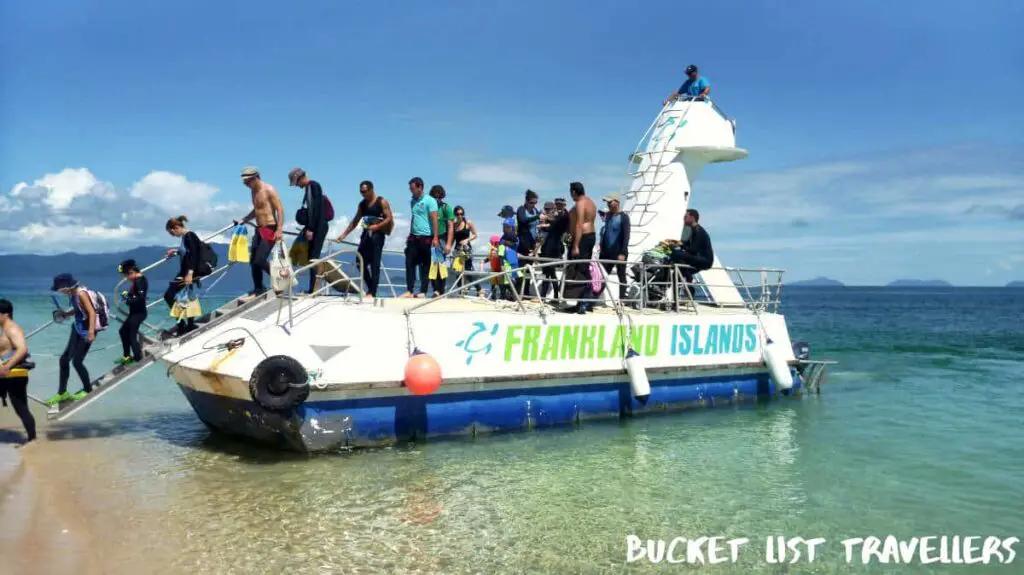
Australia is vast and varied, and how long you spend depends on what you want to see. We recommend at least 2–3 weeks for a solid introduction. You could easily spend months here and not run out of places to explore. Cities, beaches, deserts, rainforests, and mountains – Australia truly has it all. It’s also a great destination for a working holiday or long-term trip.
Australia travel guide: Best areas to visit in Australia
Major Cities in Australia
- Sydney – iconic landmarks like the Opera House and Harbour Bridge, plus beautiful beaches.
- Melbourne – artsy, cultural and famous for coffee and laneways.
- Brisbane – laid-back and sunny, with easy access to the Gold Coast.
- Perth – isolated and beautiful, with stunning beaches and a vibrant food scene.
- Adelaide – known for its festivals, wineries, and relaxed lifestyle.
- Canberra – the nation’s capital, full of museums and galleries.
- Hobart – a charming Tasmanian city with a growing foodie scene and access to wilderness.
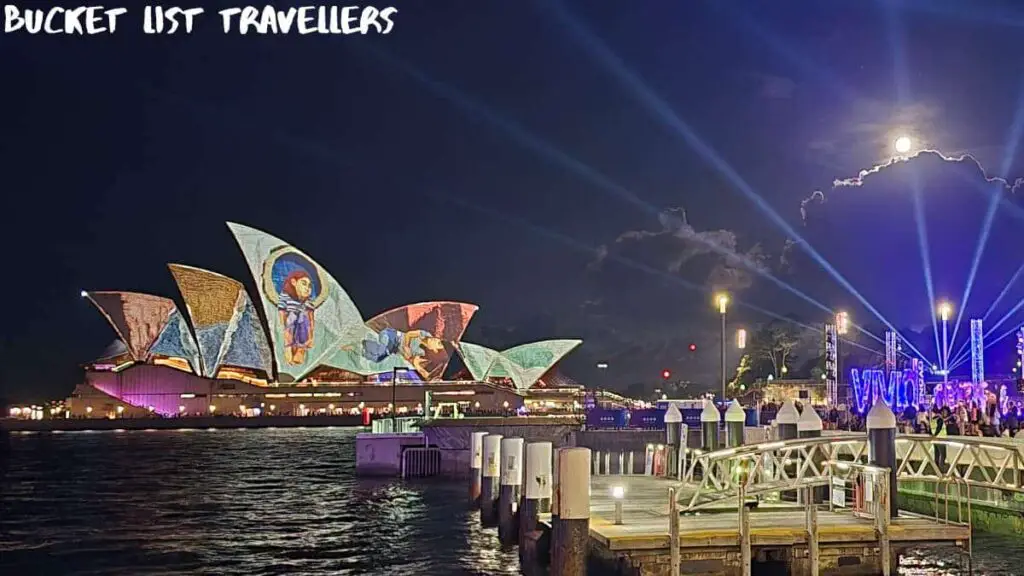
Nature and adventure destinations in Australia
- Great Barrier Reef – snorkelling and diving paradise.
- Uluru (Ayers Rock) – a sacred Aboriginal site in the Red Centre.
- Daintree Rainforest – one of the oldest rainforests in the world.
- Blue Mountains – just outside Sydney, known for hiking and epic views.
- Tasmania – wild and rugged landscapes with rich colonial and Indigenous history.

Coastal highlights of Australia
- Bondi & Manly Beaches (Sydney) – two of Sydney’s most iconic beaches, known for great surf, coastal walks and vibrant beachside culture.
- Whitsunday Islands (QLD) – a tropical paradise of 74 islands with pristine white sands and access to the Great Barrier Reef.
- Gold Coast & Sunshine Coast (QLD) – Queensland’s twin coastal gems offering golden beaches, theme parks, and relaxed seaside towns.
- Margaret River (WA) – a coastal region famed for its dramatic coastline, world-class wineries, and surf breaks.
- Great Ocean Road (VIC) – a breathtaking scenic drive along Victoria’s rugged coast, featuring landmarks like the Twelve Apostles.
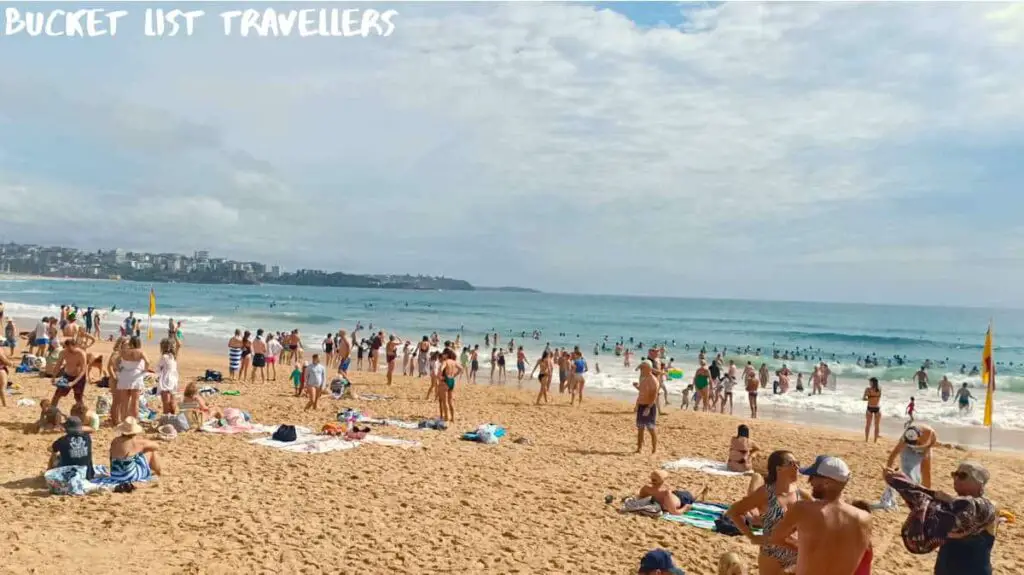
Weather in Australia
Australia has a diverse climate that varies widely by region. The tropical north experiences hot and humid conditions year-round, with a wet season from November to April and a dry season from May to October. In contrast, southern regions like Melbourne and Adelaide have a temperate climate with four distinct seasons, including cool winters and warm summers. Central Australia is arid, with hot days and cold nights. The best time to visit depends on where you’re heading – for example, visit the tropical north (like Cairns or Darwin) during the dry season (May–October), and the southern cities (like Sydney or Melbourne) during the warmer months from November to March.
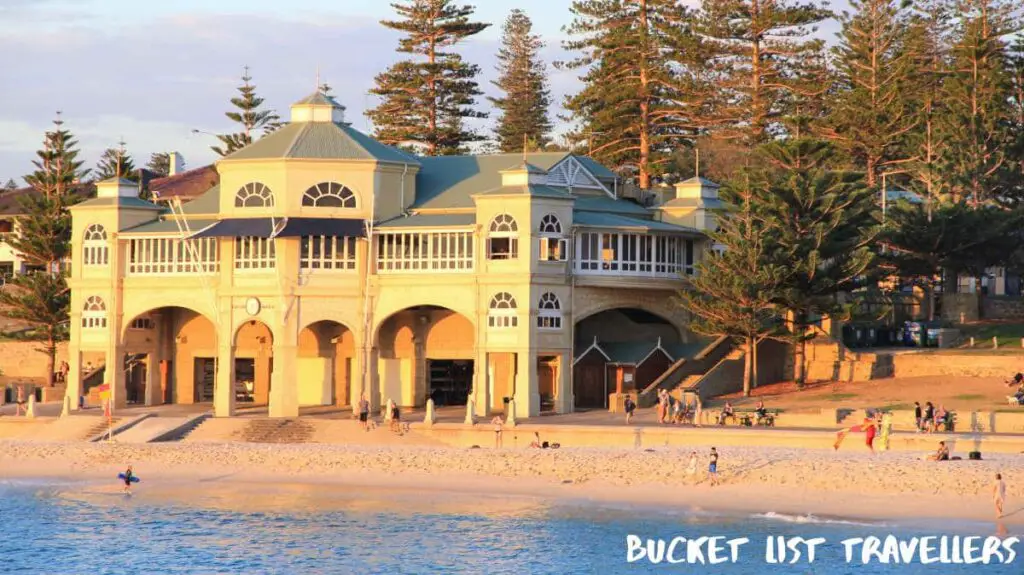
Internet and mobile phones in Australia
Major internet and phone providers in Australia include Telstra, Optus, Vodafone, TPG, iiNet, Aussie Broadband, and Exetel.
Australia began rolling out 5G in 2019 and now has wide coverage in urban areas. 3G networks are being phased out, with Telstra shutting down 3G in June 2024, while 2G networks have already been switched off nationwide.
As of March 2025, Australia ranked 30th globally for mobile internet speeds and 82nd for fixed broadband. The average download speed for fixed broadband is around 82 Mbps, with an average upload speed of 19 Mbps.
You can purchase SIM cards at airports, convenience stores, phone shops, and supermarkets. ID, such as a passport, is required to register a SIM card in Australia.
Public telephones are generally free to use for calls within Australia. Additionally some public telephone booths are equipped with include free wifi.
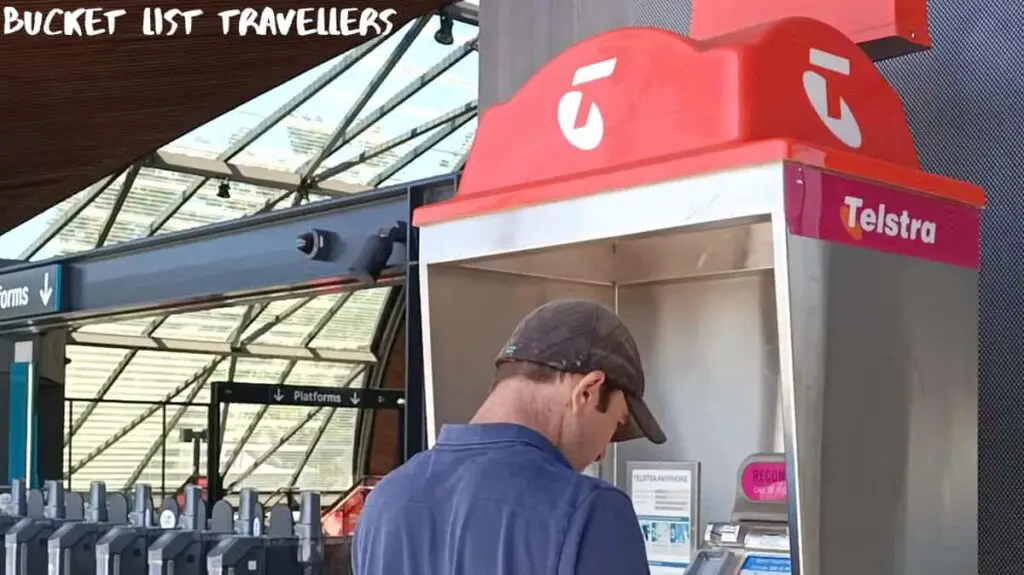
How much to budget for Australia
Australia travel guide: Daily spend for a couple travelling in Australia
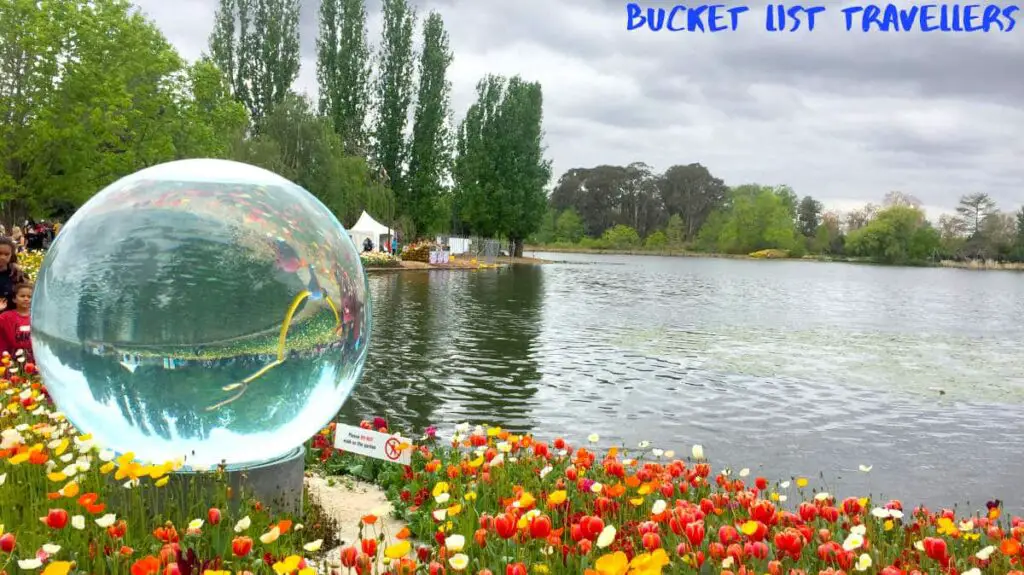
Australia is an expensive country to visit, especially when compared to much of Southeast Asia. However, there are still ways to travel on a budget by using public transport, staying in hostels, and eating at food courts or takeaway shops. Budget airlines and travel passes can also help reduce costs for longer distances.
As a rough guide, we recommend the following budgets for a couple:
- Low-budget: AUD 100–250 – includes hostel accommodation, supermarket meals or cheap eats, public transport and free attractions.
- Mid-range: AUD 250–500 – covers hotel or Airbnb stays, restaurant meals, car hire or domestic flights and paid tours or activities.
- Luxury: AUD 1000+ – offers luxury hotels, fine dining, private tours and premium transport.

Australia travel guide: Accommodation in Australia
Australia has a wide variety of accommodation to suit all travel styles and budgets. You’ll find everything from budget hostels and caravan parks to mid-range motels, boutique hotels, and luxury resorts. Airbnb is widely available in both cities and regional areas.
How much is accommodation in Australia?
For short-term accommodation, a general price per night is as follows:
- Budget accommodation – AUD 30-90 for dorm accommodation
- Mid-range accommodation – AUD 90-250 for a private room
- Luxury accommodation – AUD 150-1300+ a night for a luxury hotel/resort
- Holiday rental – AUD 200-5000+ a night for a fully furnished 3-5 bedroom home
Prices may vary considerably depending on the season and location.
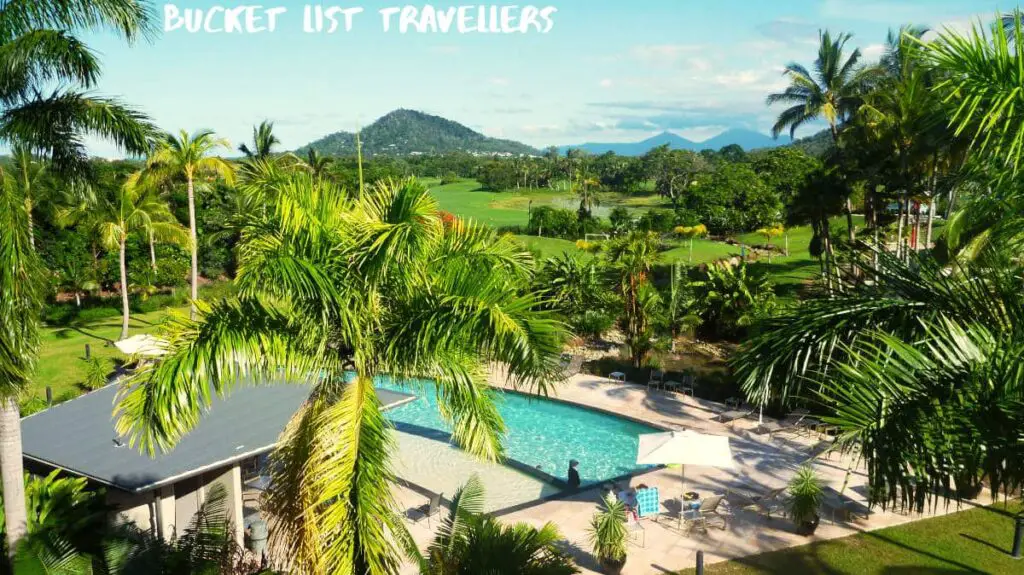
Australia travel guide: Food in Australia
Australia is a multicultural food paradise. You’ll find a wide range of international cuisines, including Italian, Greek, Vietnamese, Thai, Indian, Middle Eastern, Chinese, and more. There’s also a strong café culture and an emphasis on fresh, locally sourced ingredients. While traditional “Aussie” food includes meat pies, fish and chips, and lamingtons, the real culinary strength lies in its diversity. We have plenty of Australia food vlogs on our YouTube channel, showcasing everything from iconic local dishes and multicultural street eats to hidden gems in vibrant neighbourhoods across the country.
How much does food cost in Australia?
Our price guide for your food budget in Australia is as follows (prices as at 2025):
- Restaurant meal: AUD 20–40 per main
- Takeaway or food court: AUD 10–15 per dish
- Coffee: AUD 4–6
- Grocery items: Around AUD 100–200 per week per person if cooking
There are also weekend farmers markets, food festivals, and multicultural food events held throughout the year in major cities.
Regional dishes and food culture in Australia
While Australia doesn’t have a single national dish, iconic foods include:
- Meat pie
- Lamb
- Lamington
- Pavlova
- Barramundi
- Vegemite on toast
- Smashed avocado on toast
- Kangaroo meat (served in gourmet restaurants)
Australia also celebrates its multicultural roots with dishes like chicken parmigiana, laksa, pho, char kway teow, biryani, and souvlaki being widely available and loved by locals.
Australia culture
Weekends in Australia
Weekdays in Australia are Monday to Friday, and weekends are Saturday and Sunday. Many restaurants, cafés, and tourist attractions get busy on weekends, especially in major cities. It’s also common for food venues to apply a 10–15% surcharge on weekends and public holidays.
National holidays in Australia
Australia has a mix of national public holidays (like Australia Day, ANZAC Day, and Christmas) and state-specific holidays (like the Melbourne Cup Day in Victoria or the Royal Queensland Show in Brisbane). Always check local calendars when planning travel, as these holidays can affect business hours and availability.
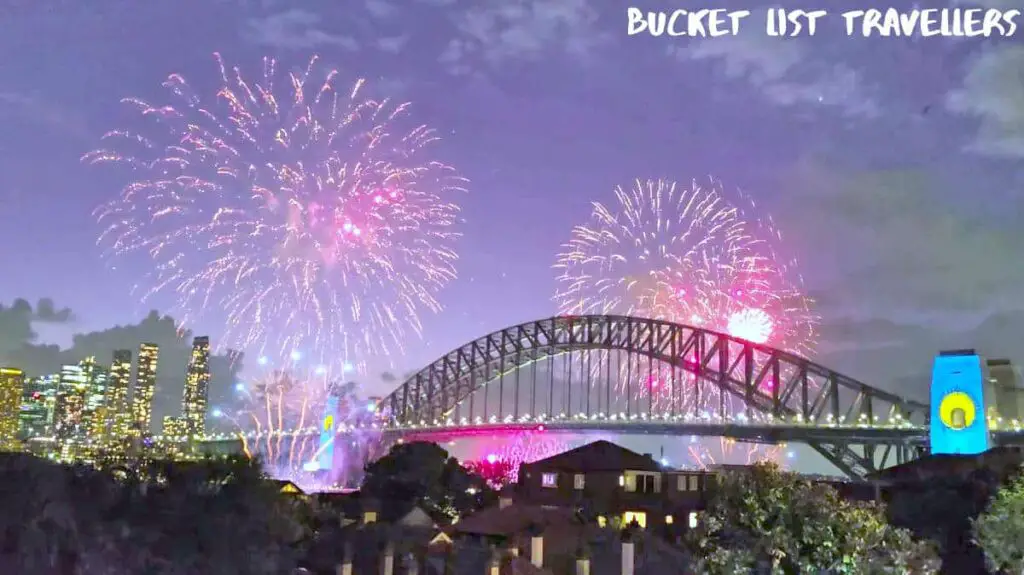
National symbols of Australia
- Australia flag – a blue field with the Union Jack in the top left corner, a large white seven-pointed Commonwealth Star directly beneath it and the constellation of the Southern Cross on the right.
- Australia coat of arms – features a shield held by a kangaroo and an emu (both native to Australia). The shield includes symbols representing Australia’s six states and there’s a golden Commonwealth Star above the shield.
- National flower – golden wattle
- National bird – emu
- Australia national animal – red kangaroo
Australia pastimes
- National dish – Australia doesn’t have an official national dish, but meat pies, lamingtons, Vegemite on toast, and barbecue (BBQ) are widely regarded as iconic Aussie foods
- Popular drinks – flat white coffee, Milo, lemon lime & bitters, Australian wine and craft beer
- National sport – cricket and Australian Rules Football (AFL) are widely considered national sports, with rugby and soccer also popular
- Religion – 44% Christian, 39% no religion, 3% Islamic, 2.7% Hindu, 2.4% Buddhist (as at 2021)
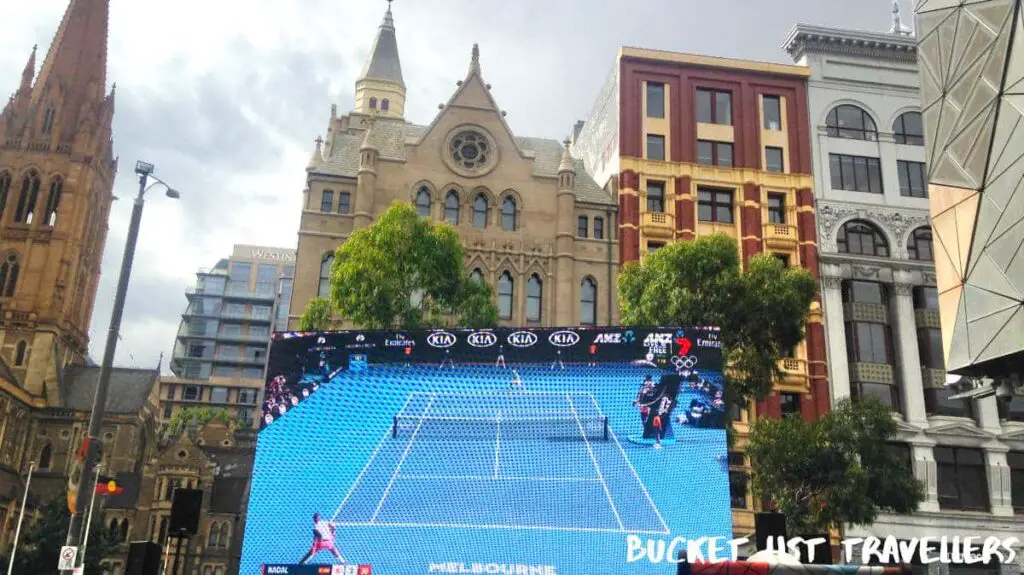
Famous Australians
- Famous people from Australia – actor Hugh Jackman, actress Margot Robbie, actress Nicole Kidman, actress Cate Blanchett, wildlife conservationist Steve Irwin, singer Kylie Minogue, media mogul Rupert Murdoch, former Prime Minister Julia Gillard, actor Chris Hemsworth, author Tim Winton
- Australian sports stars – Olympic swimmer Ian Thorpe, tennis player Ash Barty, Olympic sprinter Cathy Freeman, surfer Mick Fanning, cricketer Steve Smith, footballer Sam Kerr, Formula One driver Daniel Ricciardo
Is Australia Safe?
Australia travel guide: Safety in Australia
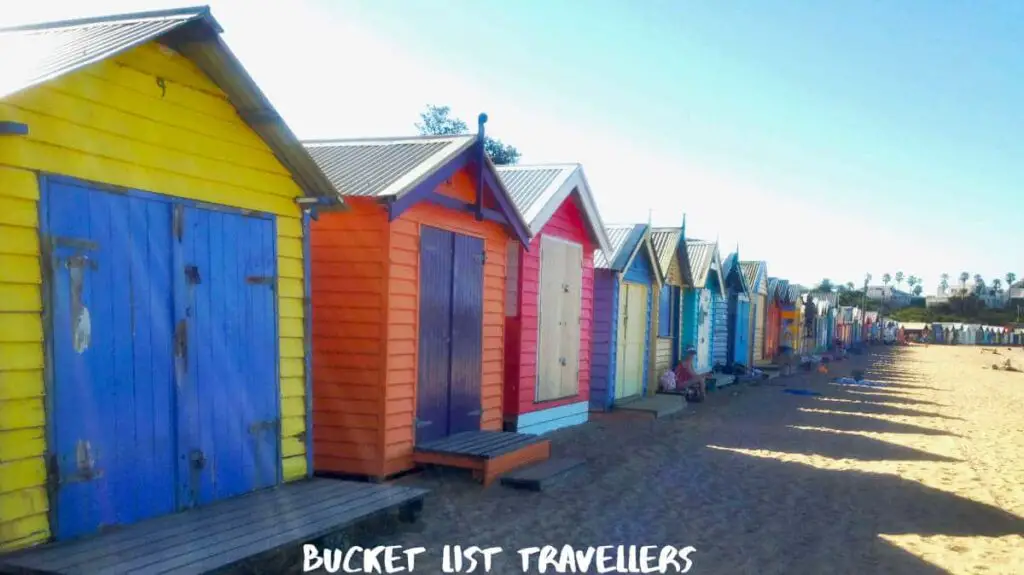
Australia is our home country, and we’re proud to say it’s a safe and welcoming place to visit. While it’s often known for its dangerous animals, the real hazard for most travellers—especially in the cities—is sunburn rather than snakes or spiders! That said, always use sun protection, particularly during summer, as UV levels can be extremely high.
Many visitors are drawn to Australia’s beautiful coastline, and for good reason. If you’re heading to the beach, we strongly recommend swimming between the red and yellow flags at patrolled beaches. Rip currents can be powerful and difficult to spot, even for experienced swimmers.
Australia ranked 19th on the 2024 Global Peace Index, reflecting its relatively low crime rate and stable society. Violent crime is rare, but it’s still wise to follow standard safety precautions. Be mindful of petty theft, especially in busy tourist areas like Sydney, Melbourne and Brisbane. When dining outdoors or visiting crowded spots, keep your belongings close and avoid leaving valuables unattended.
Australia travel guide: General safety considerations in Australia
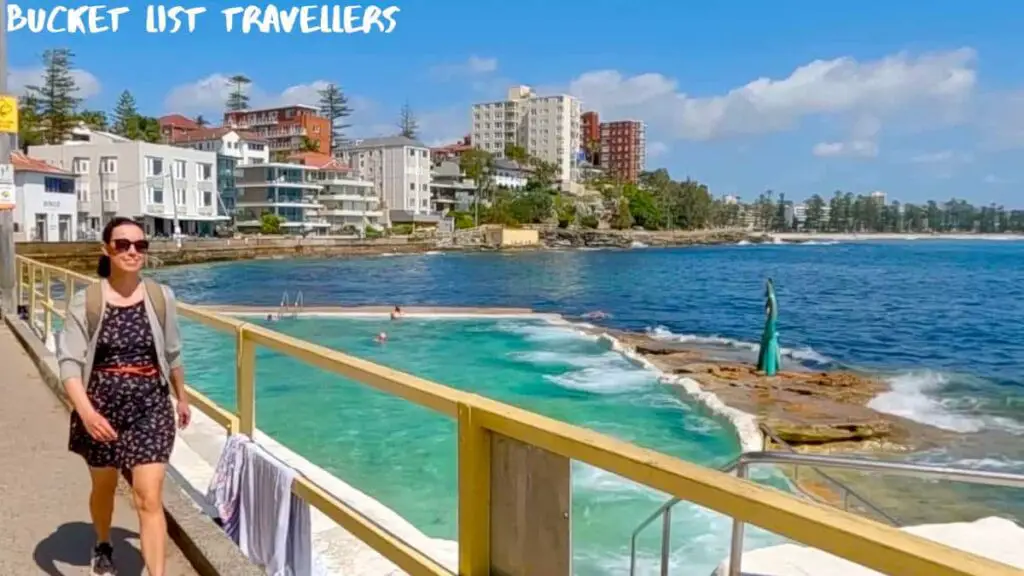
Other general safety considerations for travel in Australia:
- Drinking water – tap water in Australia is safe to drink and of high quality.
- Mosquitoes – mosquito-borne illnesses such as Ross River Virus and Barmah Forest Virus are present, particularly in tropical and subtropical regions. Dengue fever occurs in northern Queensland. Malaria is not present in mainland Australia.
- Altitude sickness – not a concern in Australia, as elevations are generally low (highest mountain is Mt Kosciuszko at 2,228m).
- Road safety – Australia has strict road rules and good road conditions. However, watch for wildlife, especially kangaroos, when driving in regional areas. Drink driving laws are strictly enforced.
- Water safety – Australia’s beaches are beautiful but can be dangerous due to strong rips and surf. Swim between the red and yellow flags at patrolled beaches.
- Earthquakes – rare and usually minor, but do occur occasionally.
- Sun safety – the Australian sun is very strong. Use SPF 50+ sunscreen, wear a wide-brimmed hat and sunglasses and avoid sun exposure during peak UV hours (10am–4pm).
- Wildlife safety – Be cautious around snakes and spiders in rural areas. Although encounters are rare, some species are venomous.
- Dogs – Australia is free of rabies, and dog attacks are rare, but always approach unknown dogs with caution.
As with any destination, take all of your normal safety precautions.
Australia Blogs
You can find our Australia travel blogs below.
Affiliate Links
This website contains affiliate links, which means we may earn a commission on any purchases at no additional cost to you. Your support helps us continue our travels and make more travel blogs and travel videos, thank you!